Camp. Boodle. Repeat.
Escape is necessary. Without it, daily routines become so engrained in our lives we're never rewarded the fresh perspective we need to reevaluate the habits that define us. This is exactly why we find ourselves sailing west from Charlevoix on the Emerald Isle ferry with another couple to campout on Beaver Island.
For most people, there are many reasons to avoid camping. From the gear, the bugs, the time, and the meals, camping trips can quickly become a juggling act of patience, grit and packing skills. That's why, on this trip, we chose glamping, or glamorous camping, at Beaver Island Retreat.
Glamping simplifies the entire sleep-under-the-stars experience, which meant preparing to spend a few nights at Beaver Island Retreat was easy. Packing took 30 minutes. I didn't need to sort through a stack of bins in the garage for the right gear or locate the misplaced tarp. "Did you say they have hot showers?" My wife had shouted from the living room.
Beaver Island Retreat is located in the center of the 54-square mile island just off the only paved road on the island, The Kings Highway. To get to the island itself you can either take a two-hour ferry ride or 30-minute flight from Charlevoix. Once on the island, transportation to the retreat is necessary. You can rent a car or bring your own across the ferry. We opt to bring our own across the ferry which made bringing our dog (welcome at the retreat) and paddleboards easy.
The idea for the Beaver Island Retreat began when Brian Vaeth and Maria Dal Pra
found themselves rejuvenated after a visit to the island and wondered how they could bring that valuable experience to others. "We started coming to the island as visitors, but each time we came it felt more and more like home," Maria says as she gives us a tour. "We were instantly connected to nature, dark skies, and the pure silence. Stress would dissipate the moment we landed and we knew we had to find a way to make Beaver Island our home." Maria wears dusty work pants and walks the property with pride as she shows us around our new home for the next few days.
Her husband, Brian, joins us while Maria continues the tour. "Our property was the last one we toured on a marathon day of hunting," Maria recalls. "It was completely overgrown from Juniper bushes, there was no driveway, and it had sat unused for years." The property was so overgrown that the only way to get a good look at it was aerial photos and parcel maps. Even looking for the water well on the property would have taken weeks of hacking through the brush and undergrowth.
“There was clearly something unique and special on this land and we decided this was where we would plant the stake”
Brian picks up the story as we walk the property while Layla (our dog) embraces her new surroundings. "There was clearly something unique and special on this land and we decided this was where we would plant the stake," says Brian. For Brian, Beaver Island Retreat is a full time job. He oversees day-to-day operations of the retreat which means everything from dismantling the tents every fall, keeping provisions stocked, and being available for help whenever a guest needs a hand or has a question. Maria works remote from the retreat full-time as Global Program Manager, yet you'll still find her busy at work around the property when she's not working. Both are quick to say that their dream wouldn't have been possible without the support from Beaver Island locals and businesses that all rely on each other to call this island home.
Beaver Island Retreat is much more than a convenient way to camp; it's a lesson on how to interact with the landscape in a responsible manner. Brian and Maria take their stewardship of the land seriously - building materials were sourced locally when possible, they only use natural soaps and they adhere to strict composting and recycling practices. Their sustainable business model prioritizes the intrinsic value of the land around them and how they can improve it for future use.
Once the couple found the perfect parcel of land and understood their commitment to stewardship, they built the experience they wanted to share with the world in one of the most remote places in the Midwest. Safari-style canvas tents are nestled on several acres among pines, cedars, junipers and ferns with no civilization in sight.
While Brian and Maria accomplished the true getaway feel, they did not forget about the simple amenities to make the experience comfortable. The retreat blends a remote getaway in the woods with the comforts of home, such as laundry facilities and silky soft bedsheets.
Veteran campers and non-campers will appreciate the convenience of having everything set up for you upon arrival with nothing to pack up or tear down once you leave. "We wanted to design an experience where guests could travel light to reduce the logistical barrier of traveling to an island," says Maria.
From charcoal, linens, soap and ice, to eating utensils and spices, everything is provided. Forget something? No worries-either they have it, or you can find it in Beaver Island (the town on Beaver Island) 15 minutes away.
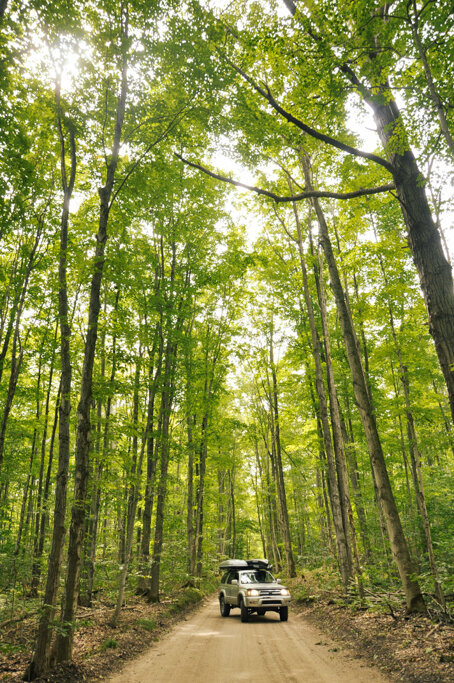
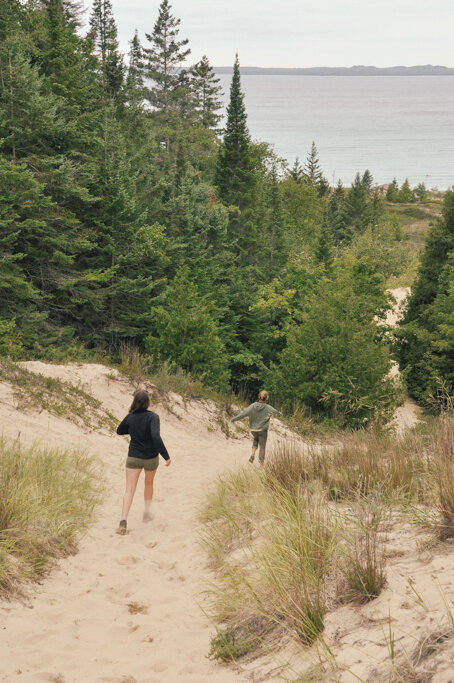
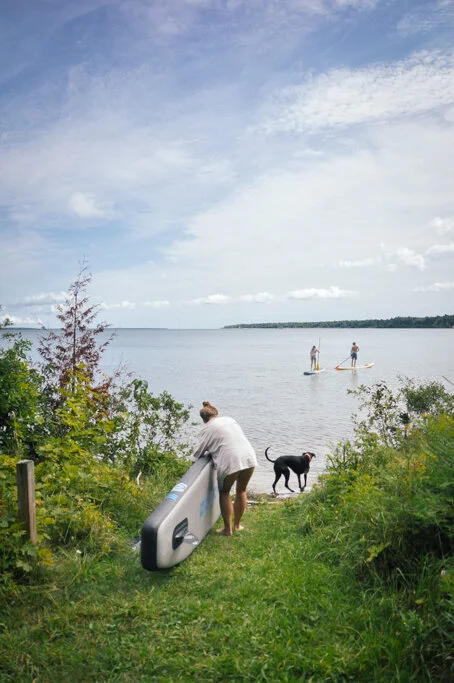
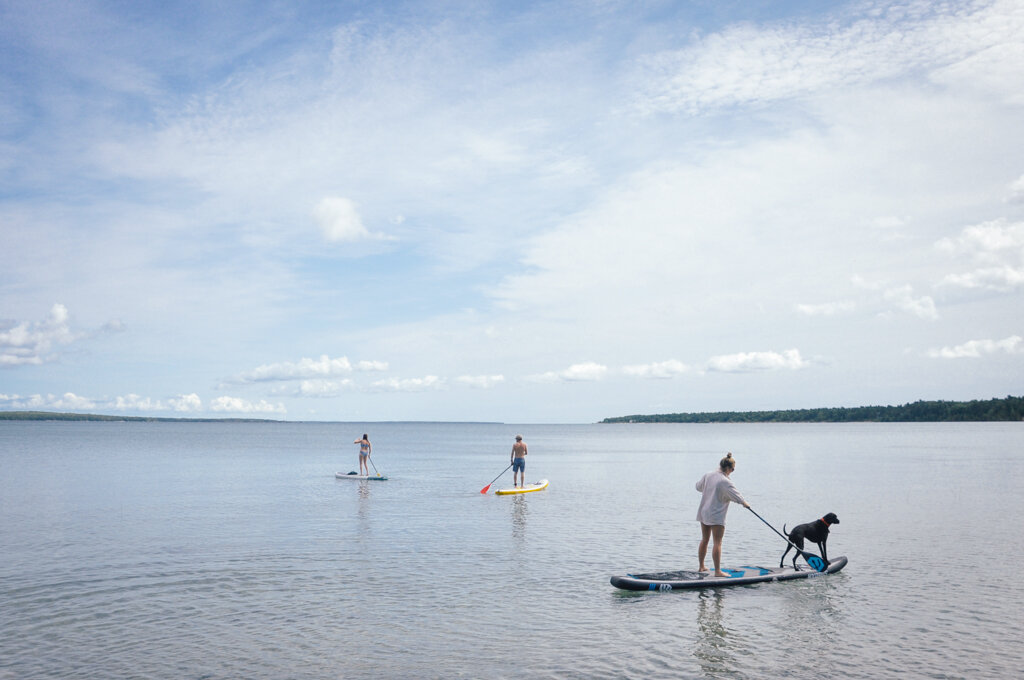
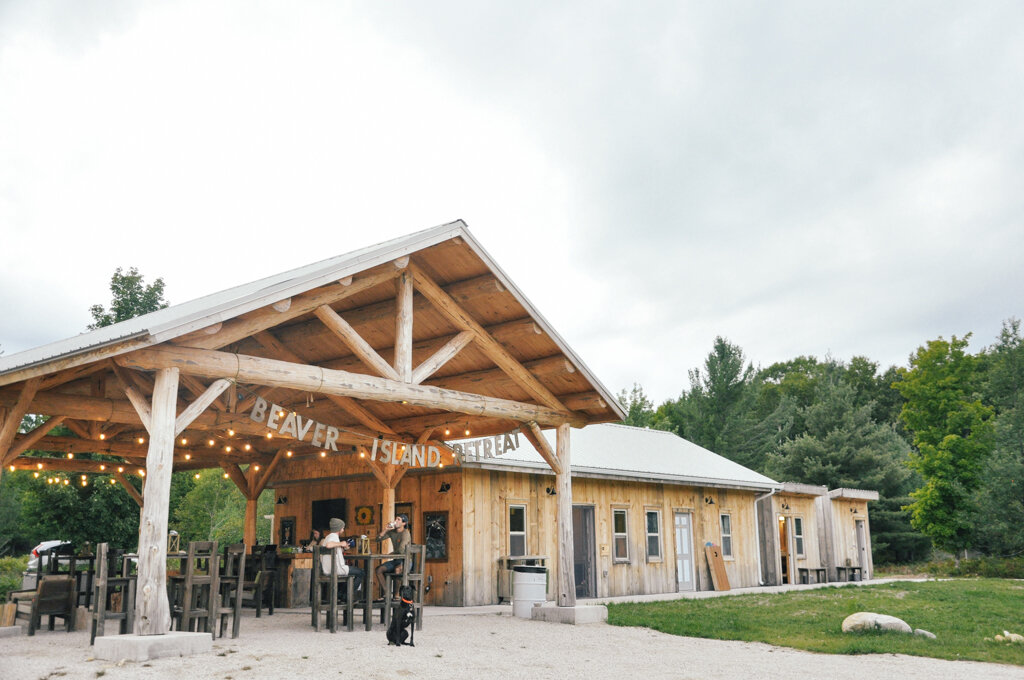
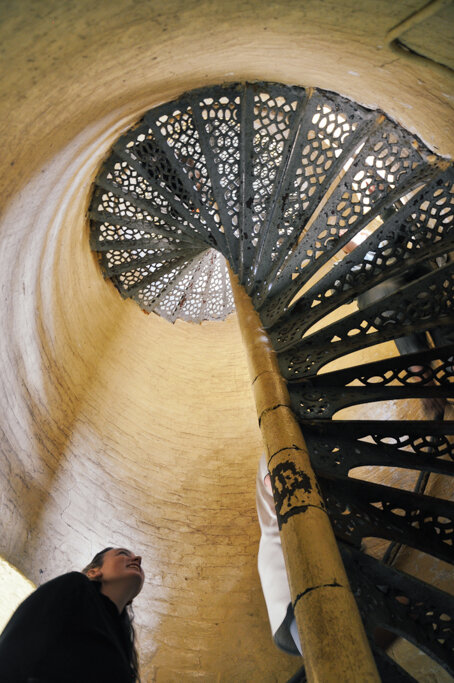

The brilliance of this retreat is that you have the option to stay secluded or interact with other guests, all at your own choosing. While there is an emphasis on the remoteness of the retreat it doesn't mean you're sealed off from human interaction. You can choose to hang out in the common area with other guests or keep to yourself at your tent.
Each safari tent is equipped with everything you need for a comfortable stay. Brian and Maria put a lot of thought into this 184-square-foot space, and it's optimized for comfort. Inside each tent is a queen-sized memory foam mattress, towels, lanterns and rustic furniture. Every tent has solar lights, flashlights, a Bluetooth speaker and USB charging ports for phones. Since ADA compliance was a priority in their business plan, there is a tent, bathroom and shower stall with wheelchair access.
Bugs? Forget about it. All openings, windows and seams were taken care of to ensure bugs won't be a problem and the property is also treated for mosquitos with an all-natural spray.
Every tent site also has its own picnic table, hammock and a cushioned love seat on the porch. You also have your own private fire pit with unlimited firewood. All of this is situated on a roughly 2,500-square-foot campsite (twice the size required by law) with your neighbor way out of earshot.
Each tent has a basic kitchen on the porch with a small butane camp stove, cooler, charcoal grill and kitchen supplies for cooking. Unlimited charcoal and ice are also provided. There is no running water at the tents, but bins are provided to take your dishes to the sink in the common area, which is a two-minute walk from the farthest tent.
You can also choose to cook in the common area kitchen, which has spices, a stainless-steel sink and prep table, a refrigerator and more. This building also houses four 8 feet by 10 feet bathhouses which include a private toilet, sink and shower.
The custom cedar log pavilion attached to the common building provides the space to interact with other guests at your own choosing. Here you'll also find free WiFi, charging stations and barware to mix drinks. We got to know other couples staying at the facility and even picked up a few tips on places to visit the during our stay.
While a stay at the retreat is a remote experience, the fellowship and storytelling with adventurous strangers under the hand-hewn cedar logs of the pavilion is just as much part of the experience. But did you come just to escape from everyone and everything? No worries, just stay cozy in your own tent and settle in for a night to yourself.
After we get settled it's time to explore the island. Once we leave the hidden-away retreat, we have a whole island laced with dirt roads and clear waters begging to be explored. For navigation, I highly recommend buying a map of the island at the ferry office before you board.
For a remote island that values the importance of escape, there is plenty to do depending on the time of year, the weather and how adventurous you're feeling. With boat rentals, snorkeling, golfing, fishing, biking and canoeing, there is truly something for everyone.
With over 300 miles of shoreline, we grab our paddleboards, brought with us on the ferry, to explore the remote beaches and coastline of the island. On the way to the water, we pass historic homes, old homesteads and fallow fields that nod to the history of the island. To our surprise, every car we pass gives us a friendly wave, which we later found out is a Beaver Island tradition.
As we wander the island in search of the spot to begin our paddleboard excursion, our friends proudly announce we're finally "boodling." Boodling is a new phrase to us, and apparently a main pastime on Beaver Island: It simply means to get in your car and drive remote dirt roads with no true destination or goal in mind-sometimes with a cooler full of barley sodas. I can't think of any place better than Beaver Island to boodle.
Our boodle eventually takes us to the northern tip of the island, where we launch our paddleboards and carelessly glide along the coast looking for shipwrecks (there are several) and savoring the views. As we paddle, we finally find the pace and rhythm that island life demands. We enjoy the silence, admire the schools of carp eating crawfish in the shallows and rejoice at the lack of cell service.
We dive off our paddleboards through the warm thermocline into the icy blue water that swirls above the sandy ripples on the lake bottom. As we sunbathe to dry off on our paddleboards, a light breeze scooches us back to the shore where we launched from-a sign that it was time to head in.
Sunburned and hungry, we boodle our way back to our safari tents to shower and prepare dinner. The luxury of a hot shower and a proper kitchen while you're camping cannot be understated, especially when you're tired or with a significant other.
We grab a few kitchen supplies from the main kitchen to cook our meal on our tent porch. Back at the tent, one of us mixes drinks, the other two prepare dinner, and I play with the dog (guilty). I eventually begin grilling as the tips of the cedar trees that line our campsite catch the last few rays of sun. The sky turns a lustrous shade of violet as the smoke from venison kabobs wafts from our campsite and we settle in around the fire.
As stars began to poke through the purple twilight, we are in for a remarkable star gazing experience. There is almost zero light pollution on the island. So little, in fact, the island is in the process of becoming a certified Dark Sky Sanctuary, one of only 14 locations in the world with this designation and only one other island.
We make plans in the orange glow of the fire to zig-zag our way around the island the following day; there are birding trails to discover, lighthouses to climb, sandy beaches to nap on and cinnamon rolls at Dalwhinnie Bakery to devour. For visitors, the island is the perfect size. Not so big that you need a whole week to explore it, yet not too small where you feel bored after a few days.
We head to bed grateful for this experience, this place and the industrious spirits that brought it to life. Life on Beaver Island hasn't changed much in the past few decades, and we hope it never does.

